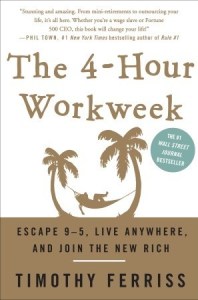“Unbeknownst to most fun-loving bipeds, not all stress is bad.”
Tim Ferriss, ‘The 4-Hour Work Week‘.
Hi folks,

It’s true! Each and every one of us have a baby on board. Our inner child, or should I say ‘children?’
As I study other people, who, in large part, I have ignored most of my life, hiding happily in a research laboratory having great fun, making mucus movies and the like, I find that I am learning more about myself than I am about them. The trick is to open your mind to who you really are, and don’t expect to like everything you find. Finding stuff in your character that does not appeal to you, and fixing it, is one key to growth and happiness. The other key is finding things that you do like and appreciating yourself for them – pat yourself on the back from time to time. This isn’t narcissism it’s healthy self-esteem. And boy, if you are an endurance athlete and you don’t trust yourself to finish a tough race (self-esteem), the chances are that you won’t. Which brings me to stress.
 I took the liberty of lifting a couple of paragraphs from ‘The 4-Hour Work Week,’ for your edification. This is really good stuff! Tim Ferriss says:
I took the liberty of lifting a couple of paragraphs from ‘The 4-Hour Work Week,’ for your edification. This is really good stuff! Tim Ferriss says:
“There are two separate types of stress… [dystress and eustress].
Dystress refers to harmful stimuli that make you weaker, less confident, and less able. Destructive criticism, abusive bosses, and smashing your face on a curb are examples of this. These are things we want to avoid [FitOldDog’s note: much, probably most, of our (healthy, well-fed people) distress actually comes from inside via the destructive ‘tapes running in our heads].
Eustress, on the other hand, is a word most of you have probably never heard. Eu-, a Greek prefix for “healthy,” is used in the same sense in the word “euphoria.” Role models who push us to exceed our limits, physical training that removes our spare tires, and risks that expand our sphere of comfortable action are all examples of eustress – stress that is healthful and the stimulus for growth.”
In order to use stress to your advantage (eustress), and minimize the negative impact of stress (dystress) on your life, it is critical to (1) learn how to distinguish between them, and (2) develop techniques to reduce dystress. This will leave much more time for the application of eustress to your daily life and activities. For instance, I find that training for the Ironman is physically and mentally stressful, but it is eustressful. I spend a lot of time doing this, and then when race day comes around I start to worry (dystress). I worry that I will let my friends and supporters down. I worry that my body won’t stand up to the strain and I’ll have a DNF (did not finish) on my record. I worry about the silliest of things. Then I meditate on these issues and the worry fades, at least consciously (dreams tell me that my dystress is still going on subconsciously). What you have to do first, though, is spot the symptoms of each. For me, eustress comes in the form of a queasy stomach, with a tendency to hyperventilate, and not listen to people (some of my friends say I do that anyway – “OK! I’m working on it”: do you sense the dystress in my tone?).

Eustress or Dystress? FitOldDog finishing the Over The Mountain triathlon, same year as Deb in picture above.
To the contrary, my most obvious symptom of dystress is a tight jaw, with my masseter muscles clenching for no good reason. It takes a lot of work to coax them into relaxing, including recently an interesting exercise with a mouthful of water, recommended by my dance and Continuum teacher, Rebecca (it really works).
Does blogging give me dystress? Nope, unless I haven’t written one that day. Now, I guess, I’m a slave to blogging. It is a fine line between an interest and an obsession.
Think about it! What is your first body dystress signal? The sooner you spot it the easier it will be to fix. Remember, excessive dystress can impair your health, and even finish you off, whereas eustress is part of FitOldDog’s program of safe exercise for better health and recovery from abdominal aortic surgery. Learn to tell the difference in your body! It is sending the messages, you have to listen.
A final note on internal stress, generated by those tapes in our heads. This can also be addressed, but the only effective ways I know are talk therapy combined with meditation and some inner fetus/baby/child/teenager work, all of which takes courage, time and patience, but I’m out of time, the Lake Placid Ironman calls.
Over and out!
-k @FitOldDog









Speak Your Mind